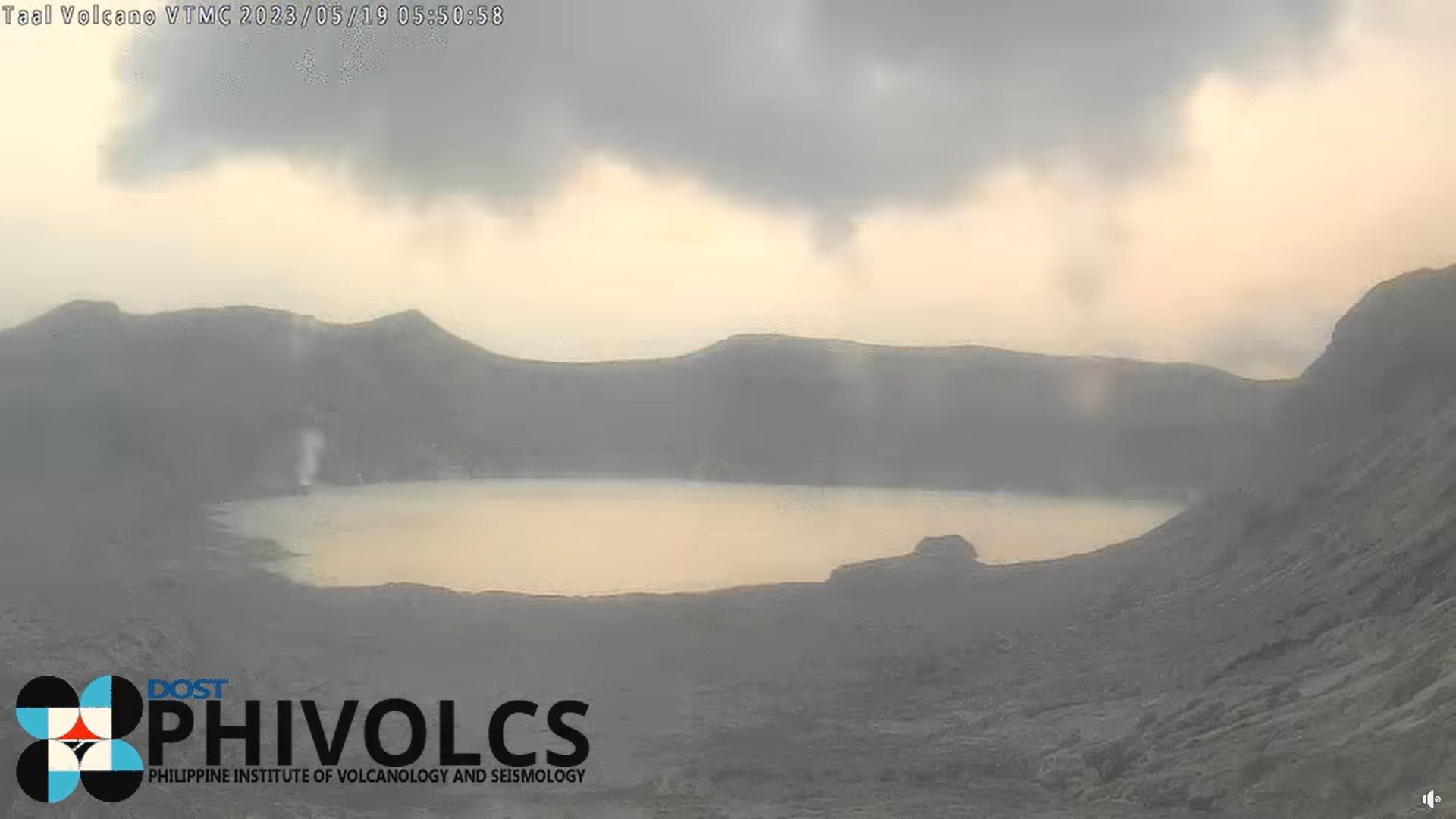
By Alec Go
Active degassing has been observed on the main crater of the Taal Volcano in the past 24 hours, the Philippine Institute of Volcanology and Seismology (Phivolcs) said Wednesday, June 7.
In its 11:00 a.m. notice, the Phivolcs said a visible upwelling of volcanic fluid in the crater and a voluminous two-kilometer high steam-rich plume caused significant volcanic smog (vog) since Tuesday.
Phivolcs said Taal emitted an average of 7,680 tonnes/day of volcanic sulfur dioxide (SO2) gas on Tuesday and 9,291 tonnes on Monday.
“Vog can be expected to persist over the Taal region while degassing activity, weak wind movement and humid atmospheric conditions prevail,” said Phivolcs.
The public are reminded to protect themselves through covering their nose with an N95 mask, noting that vog can irritate the eyes, throat, and respiratory tract.
Those sensitive to vog, particularly those with asthma, lung disease and heart disease, elderly, and pregnant women and children are advised to limit their exposure and to stay indoors.
“In addition, acid rain can be generated during periods of rainfall and volcanic gas emission over areas where the plume disperses, causing damage to crops and affecting metal roofs of houses and buildings,” it said.
Taal remains under Alert Level 1, which means entry on its permanent danger zone remains prohibited.
“At Alert Level 1, sudden steam-driven or phreatic explosions, volcanic earthquakes, minor ashfall and lethal accumulations or expulsions of volcanic gas can occur and threaten areas within TVI,” Phivolcs noted. -gb
